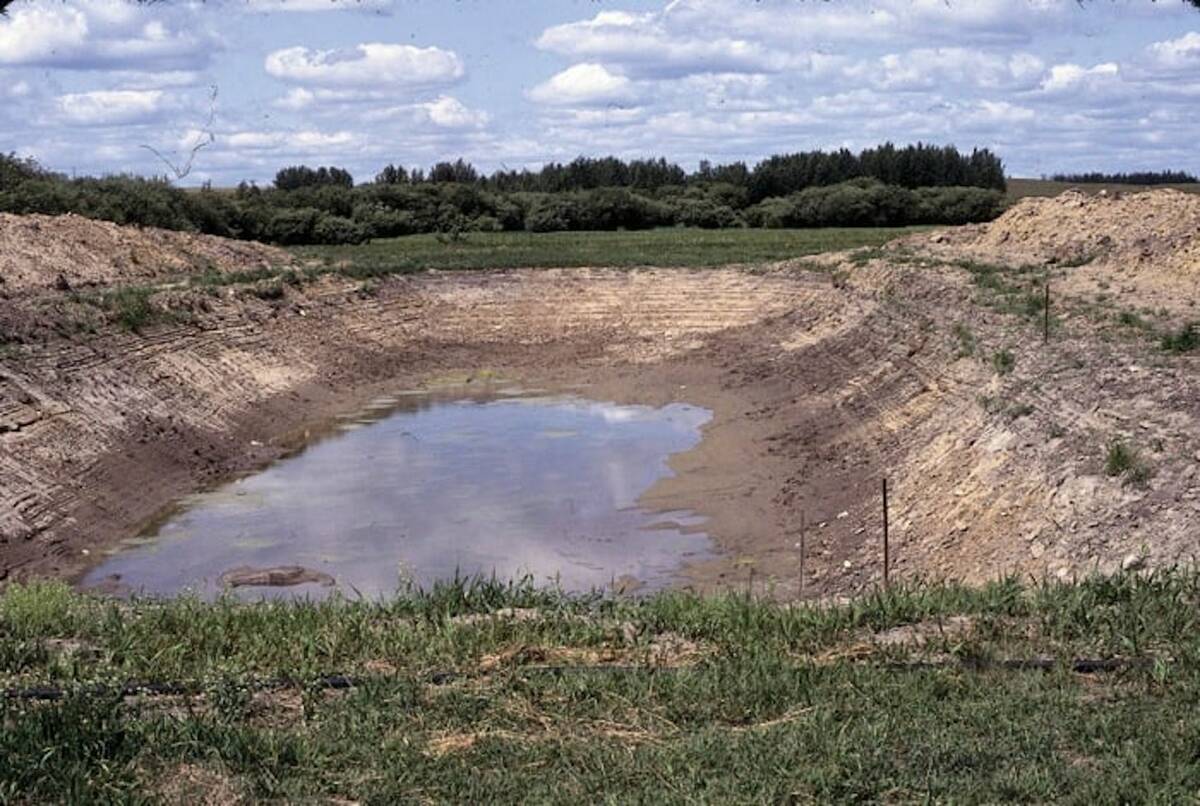WINFIELD, B.C. – Allan Claridtz has been an apple grower for 51 years and has probably seen harder times, but he has never felt so abandoned.
British Columbia’s whole farm insurance to help farmers during this most recent price crash has created widespread frustration among fruit growers.
“It is a self-destructing program. It is important not to continue it,” said Claridtz at a growers’ meeting in Winfield, outside of Kelowna.
The federal Agricultural Income Disaster Assistance program is administered through the province’s whole farm insurance program. The year-old B.C. program is modeled after Alberta’s farm income disaster program.
Read Also

Dry summer conditions can lead to poor water quality for livestock
Drought conditions in the Prairies has led to an decrease in water quality, and producers are being advised to closely monitor water quality for their animals.
The Okanagan Valley has experienced two disastrous summers with hailstorms and blistering heat that ruined apple crops.
Recent changes to the program raised growers’ hopes they might receive a payment for the losses but for many, it is too little, too late.
The fruit growers asked the agriculture ministry for a change to resolve their inventory calculations. Growing a perennial, perishable crop, their inventory is not measured in the same way as other commodities. The change was granted and could adjust claims upward by 20 to 30 percent.
About $17 million is available for B.C. farmers through the program but few have applied.
The program does not work well for the fruit industry, although it may be better for hogs and grain producers, said the president of the B.C. Fruit Growers Association.
Russell Husch said the program may also work for farmers who are low-cost producers with a couple of good years behind them.
For those who suffered back-to-back crop failures, there may be little to relieve their distress. They earned no profits and had little or no money to set aside in Net Income Stabilization Accounts.
Growers rallied in Victoria last month but came away with little from the ministry of agriculture.
They have asked for a three-to-five cents per pound payment but their hopes are low since few farmers applied for the insurance program.
“A cash payment is not in the cards until all the applications are put in,” said Husch.
“Other commodities in B.C. aren’t going to allow this government to give us a special payment until the program is exhausted.”
The fruit growers have also asked the government to process claims faster.
The paperwork is administered in Alberta and producers don’t know if their claims are in transit or in limbo waiting for processing.
“It is not fair for someone living in a disaster,” said Husch.
The growers also want a loan program to tide them over until they get an insurance payout. Some people say they have exhausted every avenue and can’t get their hands on more money.
Finally, the growers want to know what is planned for farm income insurance in the long term. They don’t support the present whole farm insurance program because it is too complicated and payouts are miniscule in relation to the need.
The program triggers a payment if margins drop below 70 percent of a three-year average but most are running in the red so there is no calculation.
They want a no-fault insurance plan with an overall four percent premium.
Growers are also angry because Washington state growers received a $1.7 billion bailout this year. The state government moved to help its growers early in 1999.

















